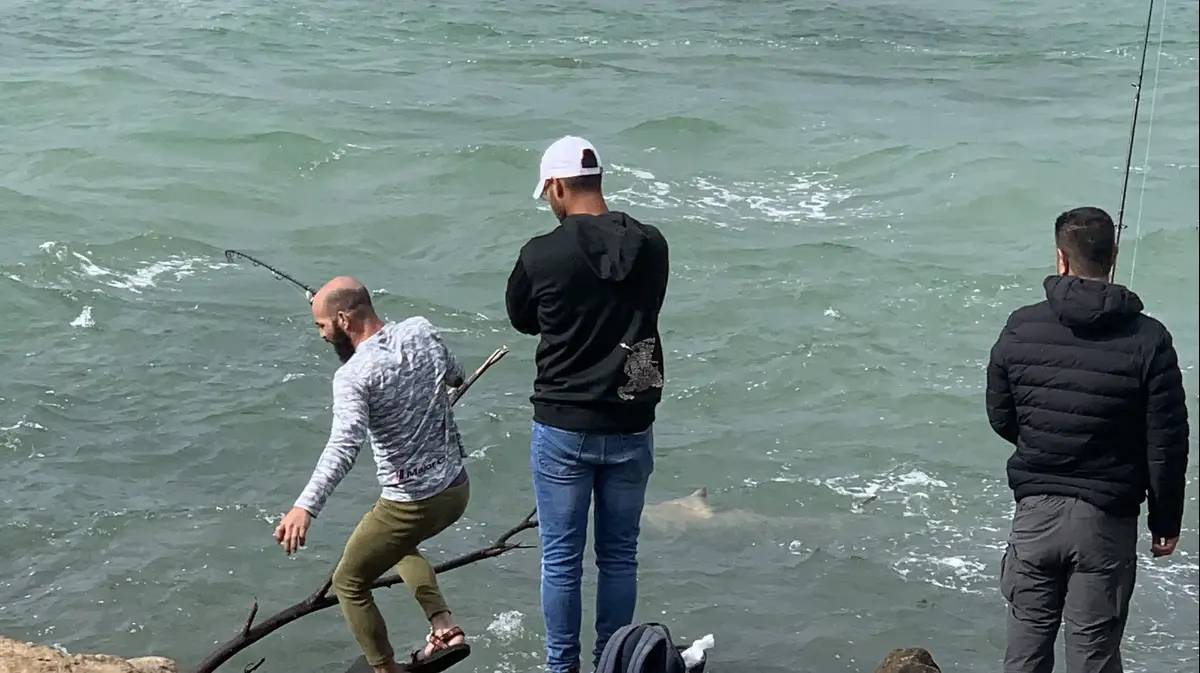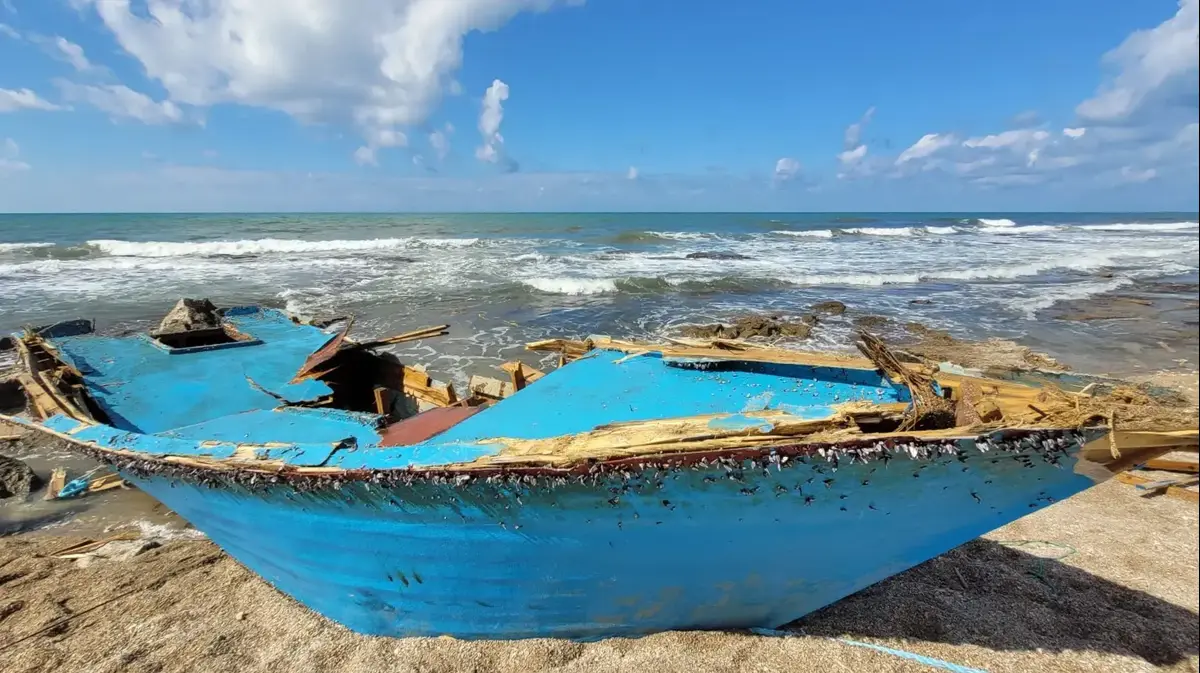An endangered shark was rescued from a fishing net on a beach in Ashdod
Two fin-type sharks, an endangered species, were caught today in a fishing net near Ashdod beach.
One of them was released, while the other was put on a boat by the fishermen, released and returned to the sea.
Watch the release of the shark back into the water
Ziv Reinstein
17/03/2022
Thursday, 17 March 2022, 15:39 Updated: 16:20
Share on Facebook
Share on WhatsApp
Share on Twitter
Share on Email
Share on general
Comments
Comments
Watch a shark rescued from the fishing net and return to the water (Photo: Guy Levian, inspector of the Marine Unit of the Nature and Parks Authority)
Fisherman loves sharks?
Less, but fishermen in a fishing boat that deployed a net close to the shore north of the hot water estuary in Ashdod (an area where sharks congregate this season), caught two fin-type sharks in their net, one of which managed to be released while the other was loaded into the boat by the fishermen.
"I received a report this morning from fishing rods (at the beach), who tried to warn the fishermen in the boat not to deploy a net in the area because they noticed sharks nearby, but the net was deployed anyway as there is no fishing limit in this area," said Guy Levian.
After a few minutes they noticed that two sharks had been caught in the net, and they tried to break free and went on a rampage.
Indeed after a short time, one shark managed to break free.
"I reached the shore and tried to locate the other shark with the help of a skimmer, but I could not because the water was very cloudy, Guy adds."
The fishermen began to pick up the net and did see that a fin shark that was still alive had been caught in it.
"They put him in a boat and released him back to the sea so that he could recover."
More on Walla!
The season has begun: Dozens of sharks have arrived in Israel;
View the spectacular documentation
To the full article
More on Walla!
"The World's Beaten Shark": Rare Documentation of a White Shark Covered with Scars and Bite Marks Disturbing Researchers
A bite mark on a terrifying white shark: A monstrous prehistoric shark still alive?
Watch the rare documentation: "Half-eaten zombie shark" continues to hunt
Want to beat the pain but are afraid of spending it?
B-Cure Laser on trial at an unprecedented price
"I tried to locate the second shark with a skimmer, but the water was very cloudy."
Guy's boat next to the fishing boat (Photo: Nature and Parks Authority, Guy Levian)
One of the two sharks caught in the fishing net, today (Photo: Nature and Parks Authority, Guy Levian)
90% decrease in the fin population
The fin shark is an active swimmer near a muddy and sandy bottom at a depth of 20-65 meters, and sometimes even up to a depth of 230 meters.
It is located in both coastal and pelagic areas (in the open sea).
Its length reaches up to 2.5 meters.
Females usually live to the age of 21 and males to the age of 15, but sharks that have reached the age of 34 are also known.
This species is characterized by a tall, large and upright dorsal fin.
Sometimes the fins have slightly dark edges.
The fin shark feeds on gram fish, small sharks, accents, prawns, shrimps and marine snails.
The young feed mainly on cancers.
Although it is more active at night, this species feeds both during the day and at night.
The pregnancy lasts 12-8 months and the females reproduce every two to three years.
At the end of pregnancy the females spawn 18-5 live offspring 75-50 cm long. They will reach sexual maturity at 4-3 years of age, when their length will be 150 cm.
Usually their fin sharks live in flocks of separate pairs.
There are spawning grounds in the Gulf of Gabes in Tunisia and the Gulf of Gakuba in Turkey.
In some distribution areas of the fin shark it makes long-term seasonal migrations.
The skin of adult and adolescent females is thicker, and it is possible that such thick skin contributes to protection against courtship bites of males as well as from oblique damage.
These sharks migrate due to their fins, flesh and skin.
They are perceived as a by-product of standing nets and fishing rods (Sharak).
In the Mediterranean, estimates indicate that between 2015-2005 there was a 90% decrease in population size and by 2066 the populations may decrease by 99.99%.
In the 1980s it was the most rare species in the eastern Mediterranean among sharks
More on Walla!
View Documentation: A shark jumped out of the water and attacked a tourist on the Red Sea coast
To the full article
The shark caught in the net is returned to the sea (Photo: Nature and Parks Authority, Guy Levian)
Unfortunately, fin sharks are spotted due to their fins, flesh and skin (Photo: Nature and Parks Authority, Guy Levian)
Sharks are protected natural values.
If they are caught in a net or on a fishing rod, they must be released back to the sea immediately.
Tourism
news
Tags
shark
Ashdod
Fishermen











